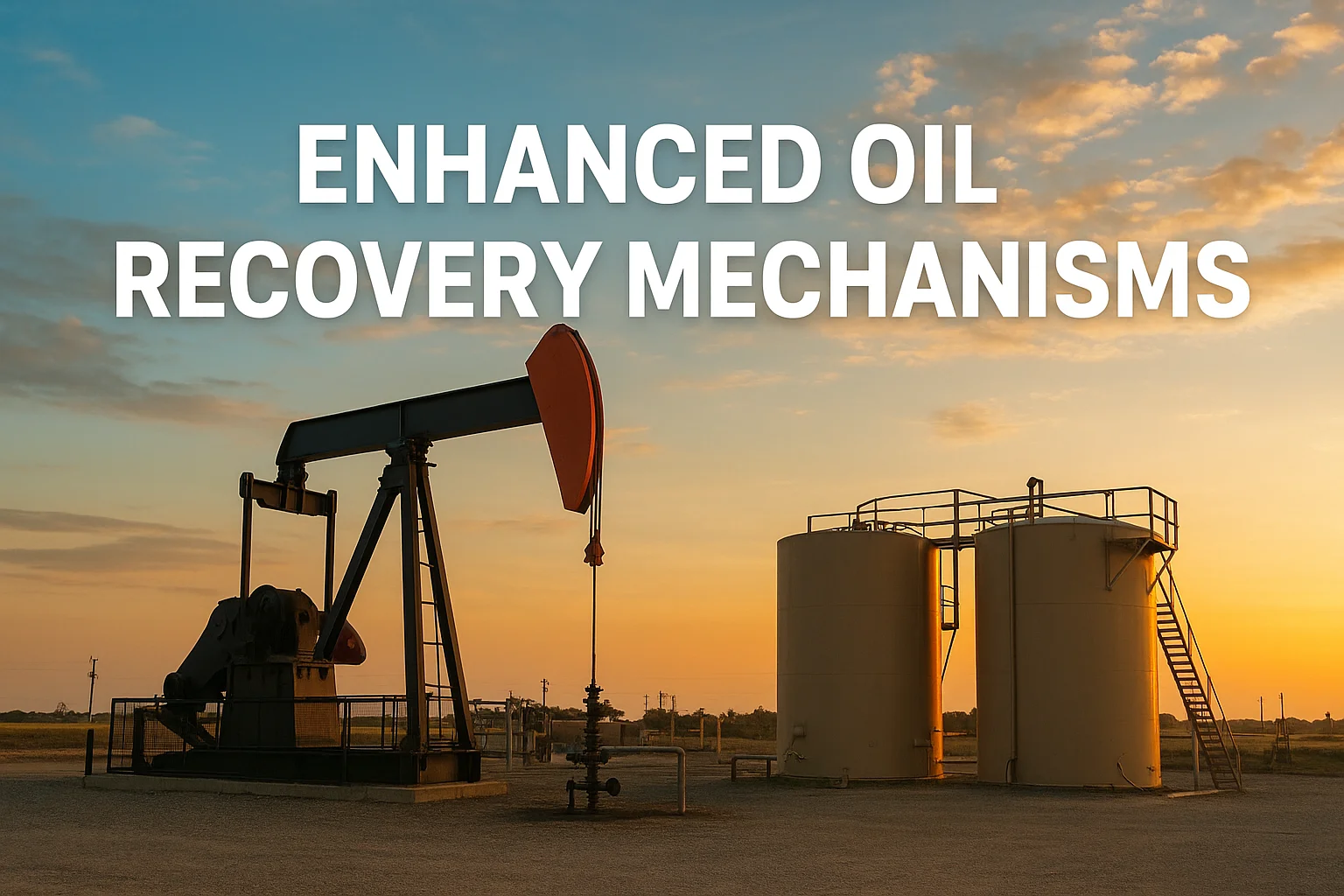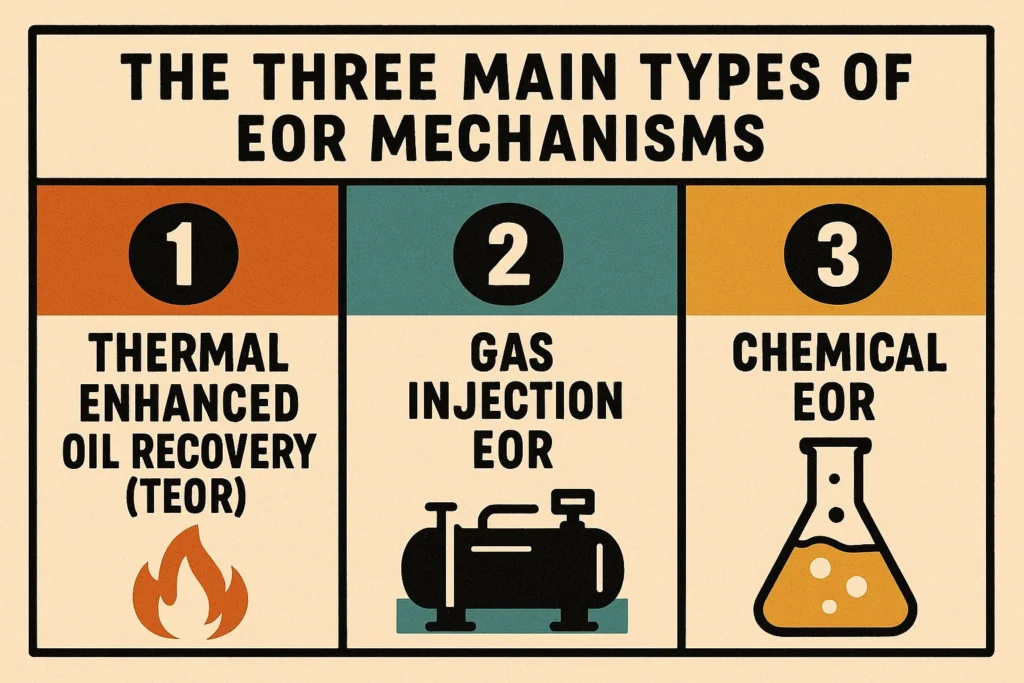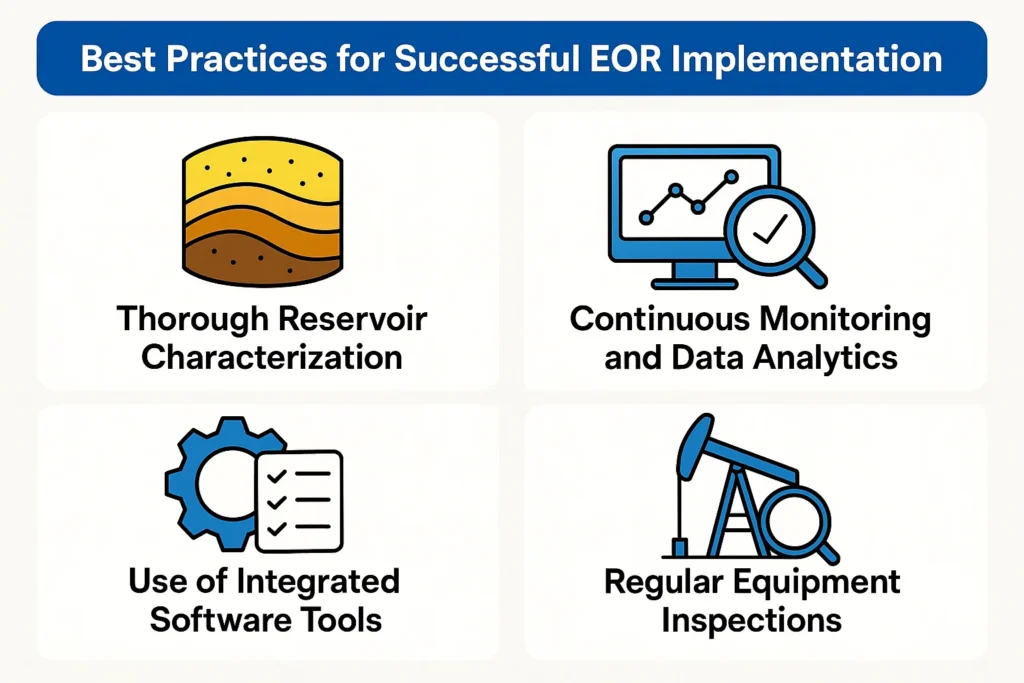Inspections Track Software For Oil and Gas Inspection Industry

Oil fields worldwide face a common challenge — declining production rates over time. While primary and secondary recovery methods extract a significant portion of the available oil, a substantial amount often remains trapped in the reservoir. This is where Enhanced Oil Recovery Mechanisms comes into play. By applying advanced recovery techniques, operators can boost extraction efficiency and extend the productive life of mature reservoirs.
In this detailed guide, we’ll explore EOR mechanisms, their classifications, the latest innovations, and how Inspections Track software supports the oil and gas industry in optimizing EOR operations and maintaining regulatory compliance.
Enhanced Oil Recovery (EOR) refers to advanced techniques used to increase the amount of crude oil that can be extracted from an oil field after conventional recovery methods have reached their limit.
While primary recovery relies on natural pressure and secondary methods use water or gas injection, EOR introduces chemical, thermal, or gas-based methods to alter the properties of the oil and the reservoir, enabling better mobility and displacement efficiency.

EOR mechanisms are generally divided into three main categories — thermal recovery, gas injection, and chemical flooding. Each method uses a different approach to improve the flow characteristics of oil.
| EOR Type | Mechanism | Objective | Typical Application |
|---|---|---|---|
| Thermal Recovery | Uses steam or heat to reduce oil viscosity | Makes heavy oil flow more easily | Heavy oil reservoirs |
| Gas Injection | Injects gases like CO₂, N₂, or hydrocarbon gases | Increases pressure and oil swelling | Light to medium crude oil fields |
| Chemical Flooding | Injects surfactants, polymers, or alkalis | Improves sweep efficiency and reduces interfacial tension | Mature fields and heterogeneous reservoirs |
Thermal EOR involves the injection of steam or hot gases into the reservoir to heat the oil, thereby reducing its viscosity and allowing it to flow more freely toward production wells.
Gas injection uses miscible or immiscible gases to improve oil displacement. The injected gas either mixes with the oil or pressurizes the reservoir, depending on the reservoir conditions.
Chemical flooding involves injecting specific chemicals into the reservoir to improve sweep efficiency and reduce interfacial tension between oil and water.
Modern EOR projects are increasingly data-driven and digitally optimized. The integration of AI, IoT, and predictive analytics allows oil companies to monitor reservoir performance in real time, improving decision-making and minimizing operational risks.
When managing complex EOR projects, ensuring the integrity and safety of all assets is crucial. That’s where Inspections Track steps in.

By using Inspections Track software, oil and gas companies can improve operational reliability, reduce downtime, and achieve higher efficiency during EOR activities.
While EOR improves extraction rates, it also contributes to carbon management through CO₂ storage in reservoirs. Companies adopting CO₂-EOR methods not only enhance recovery but also reduce their carbon footprint — aligning with global sustainability goals.
From an economic standpoint, EOR can extend the lifespan of mature fields by decades, significantly reducing the need for new exploration and infrastructure.
To ensure optimal results from an EOR project, companies should focus on:

Enhanced Oil Recovery Mechanisms remains a cornerstone of modern petroleum production, enabling companies to extract more from existing assets while embracing sustainability. As EOR technologies evolve, the integration of digital tools like Inspections Track software ensures that these operations remain safe, efficient, and compliant.
By leveraging innovation and maintaining rigorous inspection standards, the oil and gas industry can continue to meet global energy demands — responsibly and efficiently.
Read more : engineering behind fracking and horizontal drilling
The primary goal is to increase the amount of crude oil extracted from reservoirs beyond what primary and secondary recovery methods can achieve.
The cost-effectiveness depends on reservoir conditions. Gas injection, especially CO₂-EOR, is often preferred for its dual benefit of enhanced recovery and carbon storage.
Not all. EOR methods are selected based on reservoir type, temperature, pressure, and oil properties.
Inspections Track ensures compliance, reduces operational risks, and automates reporting for oilfield inspections and equipment monitoring.

Deepwater oil and gas operations face some of the most demanding inspection challenges in the energy sector. Extreme depths, high pressure, limited visibility, and safety risks make traditional inspection methods slow, costly, and hazardous.As a…

Periodic Ex surveys in HAZLOC (Hazardous Locations) are a critical requirement for oil & gas facilities. They help ensure that electrical and mechanical equipment installed in explosive atmospheres remains safe, compliant, and fit for operation….
SkySoft Connections provides quality IT services around the globe. Our services begin with experience and end with dedication, ensuring innovation and reliability
© Copyrights, 2024 All Rights Reserved Skysoftconnections
Contact us
Get notified about new articles